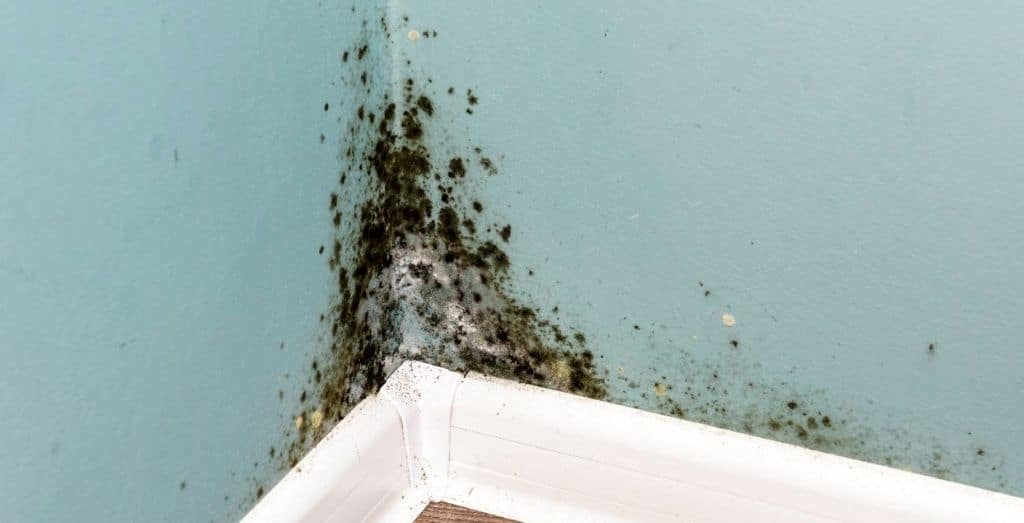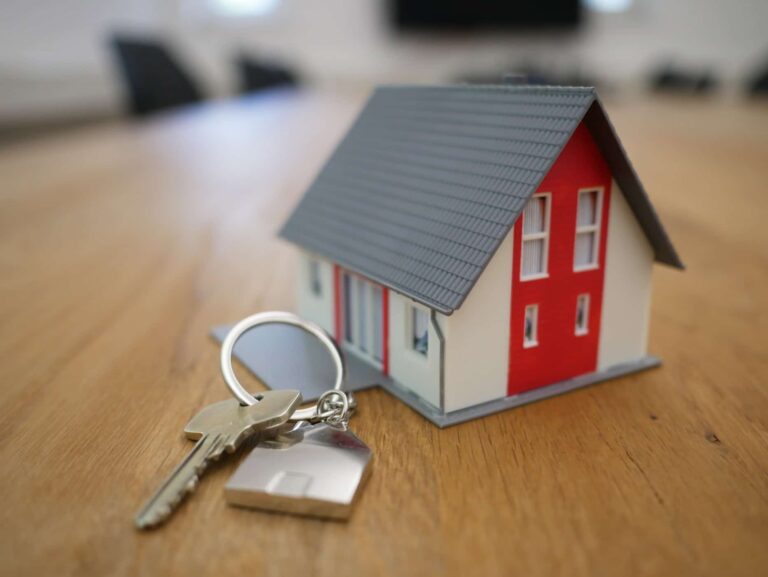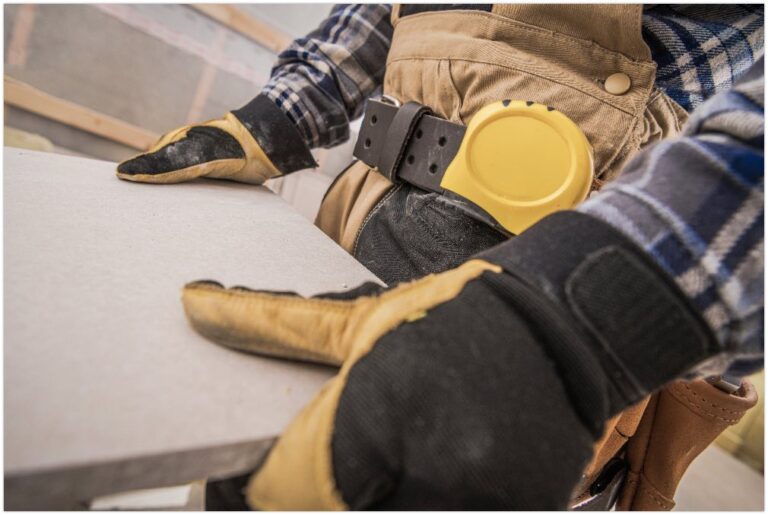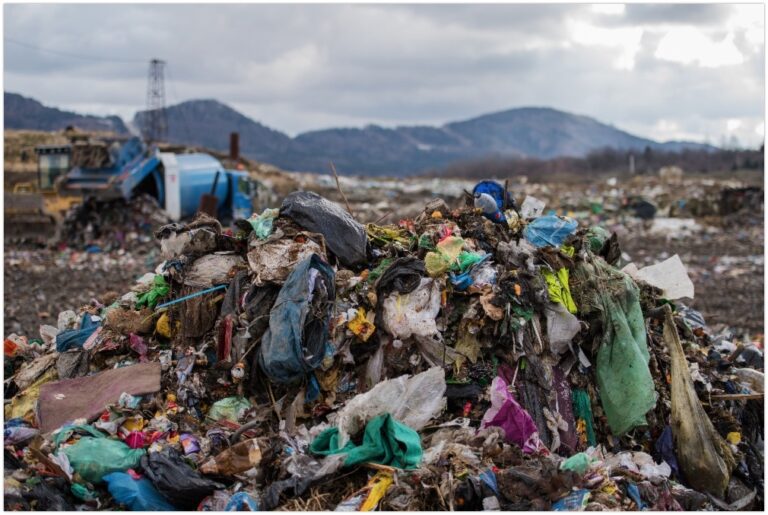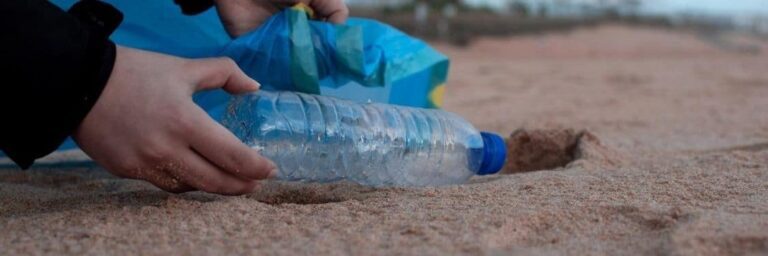Many homeowners have been through the simplest to the worst mould problems. When it comes to handling and preventing these organisms, things can get quite difficult.
Moulds bring several adverse effects on your home, and you might have or haven’t seen the worst of them. These harmful microbes are typically hard to detect as you can’t directly get a glimpse of them.
Removing moulds can also be tough, especially if they’ve occupied a large area with some things blocking you off from seeing or reaching them. Worst of all, you and your entire family can be at risk of having health problems because of these organisms growing in your home.
If you want to protect your entire household from moulds and prevent these microbes from causing harm to your entire household, then go over to the topics ahead.
What are Moulds
Moulds are microscopic organisms that are part of our natural environment. They usually grow and reproduce on plants, soil, and any dead or decaying matter.
They neither belong to plant or animal kingdom but known as fungi, playing a significant role in the breakdown of organic material.
What Does Mould Do?
Moulds can live indoors and outdoors. They can grow and replicate through the production of microscopic spores, just like how plants produce seeds. These spores are so tiny that they can travel through the air, reaching other areas and surfaces. They germinate and create new mould colonies once they land on a place suitable for them.
On the other hand, moulds come in many types, and they all require moisture or water to live and reproduce. These organisms can be destructive, but they are usually not an indoor problem unless their spores come to rest on damp surfaces.
These fungi can digest and consume anything they’re growing on and eventually cause damages on infrastructures and fixtures if left unchecked for a long time. They can also result in wood rotting, stains, and drywall damages. The presence of excessive moisture on buildings and surfaces make a perfect spot for them to create a colony.
Aside from that, they bring potential hazards to human health. Hence, it’s very important to prevent these destructive moulds from growing inside your home.
How Household Mould Affect Your Health
Those filthy little spots spreading over the surfaces of your home may be a menace to you and your entire family’s health. Now you know what moulds are and how they can grow all around your place, you must also understand the hazards it can bring to you.
If you are not keen and diligent in preventing and removing these harmful organisms, you might encounter various health problems.
A person who is sensitive to moulds may have to suffer irritated eyes, sneezing, stuffy nose, skin rashes, and headaches. People who have mould allergies may experience breathing difficulties.
Likewise, those with weak immune systems or chronic lung illnesses can also get infections due to moulds. If you or anyone in your family acquired health problems after contact with moulds, better consult your doctor or health care provider.
Difference Between Moulds and Mildew
Mould and mildew are two similar but also distinctive types of fungi commonly living inside your home. They both grow in moist places and spread easily on surfaces, making them difficult to deal with and remove.
If left unattended, these microorganisms can occupy a large area of your property, causing structural damages and various health problems. While these two types of fungi have many similarities, they impose different hazards and require distinctive treatment for prevention and removal.
Moulds are all species of microscopic fungi growing in the form of hyphae. These are multicellular filaments that thrive on food matter or inside permanent structures, including crawl spaces, ceilings, walls, and other areas in your home with a moisture problem.
On the other hand, mildew usually lingers and thrives on the window ledge, fabric, paper, and other organic materials in your home. These fungi also refer to as a specific type of mould. They usually have flat growth on surfaces, which can get easily removed through proper cleaning.
There are many significant differences between the characteristics and appearance of mould and mildew. Hence, in order to establish the best ways to clean such types of fungi, you have to recognise these contrasts and know what form of microbes you’ve noticed in your home.
Five Common Types of Moulds
There are more than 10,000 mould species that can grow and thrive indoors. However, most of the moulds that you can find inside your home may belong to one of these types:
-
Aspergillus
The aspergillus moulds are typically the most common type found inside homes and buildings. They often grow and stick on walls, clothing, and paper products. Their colours can be black, green, white, brown, grey and yellow. These moulds can spark off allergic reactions and respiratory problems, including lung inflammation.
-
Stachybotrys chartarum
Known as “black mould” due to its colour, this form of mould is the most hazardous found inside homes. It generates mycotoxins that are toxic compounds causing many severe health issues, including breathing problems, allergies, sinus infections, asthma attacks, and fatigue.
These toxic fungi appear with a musty odour and linger on areas with constant dampness. They are around dripping pipes and within air conditioning tubes where condensation happens.
-
Alternaria
These moulds live on the walls and showers’ surfaces, as well as around your windows, underneath sinks and other damp areas. Buildings or infrastructures that have suffered from some sort of water damage can be the perfect spot to find these microbes forming a colony.
They can be of different colours, either black, dark brown, or grey with a hazy texture.
-
Cladosporium
This mould often stays and lives on fabrics and wood surfaces. It can stick around your curtains, beddings, carpets, floorings, and cabinets. It appears with an olive-green or black colour and can also trigger respiratory problems.
-
Penicillium
Like any other moulds, penicillium can live on any material with moisture or dampness. They can occupy some parts of your wallpaper or mattresses, appearing in green or blue with strong stuffy odour. Their spores can easily suspend in the air, and when inhaled, may cause allergic reactions.
Two Types of Mildew
Mildew causes diseases on plants, damaging their overall structure and appearance. It typically plays an important role in breaking down organic matters and has two classifications; powdery and downy.
-
Powdery Mildew
The usual growing spots of this mildew are on flowering plants. It begins as grey or white-spotted marks on plant surfaces and will eventually look black or brownish as the fungi reproduce and mature.
-
Downy Mildew
This form of mildew lives on agricultural products, such as fruits and vegetables. It usually appears as yellowish but gradually becomes brownish spots or may vary depending on the surface where it’s growing.
Identifying Mould or Mildew in Your Home or Property
If it’s still not clear to you on what form of fungi you’ve found inside your place, then you can test them to know better. You either do a home or a professional mould or mildew testing.
Home testing is where you can use your household bleach for the identification of microbes in your home. You only have to drip a few drops of it on the surface with fungi, wait for five minutes, and observe the area.
If the spot turns lighter, then it’s mildew. But if it stays dark and doesn’t change colour, it probably moulds that you have to deal with inside your home. Mould and mildew testing kits are also available in the market, and you can use them instead of your household bleach, but they’re quite costly.
On the other hand, if you’ve noticed that fungi have grown and occupied a large area in your home and you’re unsure what to do, your best choice is to seek professional service. You can always call a reliable and well-rounded mould removal team near you to test and eliminate hazardous fungi in your house.
Warning Signs that There Are Moulds in Your Home
Noticing the signs of moulds in your house is essential to prevent any unnecessary health and safety problems. If you think that your home has mould and want to spot them right away, you should look into these signs and know how to get rid of them.
Here are some signs that moulds are growing inside your home:
Strange or Nasty Smell on Air Conditioner or Heating System
The weird odour coming from your air systems can be due to the presence of moulds. Standalone air conditioners are dark and damp, which are typically the perfect place for moulds to grow.
As they usually get stored on warm areas during the winter season, the chance of developing moulds on this equipment most likely increases. To prevent moulds on your home’s cooling or heating systems, get an HVAC technician for its regular check-up and cleaning.
Musty Odor Inside Your Home
When you notice that things inside your house smell mustier than they usually do, even after doing regular clean-up, you may have mould problems coming your way.
Cleaning and washing all the fabrics in your home, such as curtains and carpets, and taking out rubbish bins, may not eliminate the stuffy odour when moulds are present on a particular corner.
If the smell still lingers and gets stronger as you draw closer to one area in your house, then you better prepare yourself to deal with those harmful moulds.
Wallpaper Peeling Off
Although your wallpaper can eventually have discolouration and shredding, the strange peeling or deformities on its surfaces such as cracks and bubbles may indicate that there’s moisture on the wall.
As mentioned, areas or surfaces with moisture become a suitable spot for moulds to thrive. Observe the walls of your home and pay attention to those parts that look wetted or distorted.
Dark Shower Tiles’ Grout
While moulds that grow on your shower tiles’ grout can be the harmless type, leaks on pipes or bathroom plumping can bring the more toxic fungi in the area. The removal of these harmful microbes is better left to the professionals for your safety.
Dark or Coloured Stains on the Walls
Not only the grout of your shower walls can have dark or coloured moulds, but also other wall areas of your home. These fungi can come in numerous forms, colours, and textures.
They can be slimy green, which you can usually notice or grey-coloured mould build-up. If you see that your walls have these harmful spots, it’s best to check the room’s humidity or examine the pipes for any leakage.
Health Problems Due to Moulds
Uncontrolled moulds can cause many health problems and can be severe or life-threatening, especially to those with weak immune systems, asthma, or other chronic respiratory diseases.
Besides, these harmful microorganisms can aggravate your illness and make you feel sick. A simple way to test the effects of moulds to your health is to spend time outside your house and observe how you feel. Notice if the symptoms persist, and watch out for sneezing, itchy nose, watery eyes, coughing or skin irritations.
Let’s go over to some of the health issues you might have to experience when moulds are present in your home:
-
Aggravated Asthma
People with pre-existing breathing difficulties like asthma can be at risk of worsening illness with long hours spent in a house with moulds.
While most moulds may not affect those individuals with no breathing problems, these fungi will more likely aggravate asthmatic people’s symptoms.
-
Irritating Skin
Moulds can also grow on your clothing, especially those damped ones. If you tend to put away your wet towels or laundry on unventilated areas, there’s a greater chance that mould growth will occur on the fabrics and cause skin irritation. Hence, always ensure to let your wet clothes dry in an open space and prevent the build-up of moulds.
-
Colds that Won’t Go Away
Your body’s reaction to the presence of moulds can come in the form of sneezing and itchy or runny nose. Notice what area in your house you frequently experience colds.
If the symptoms tend to occur in a particular room and go away once you leave that space, then moulds are probably harbouring in that part of your house.
Flooding or Water Leaks
The presence of water or moisture typically signifies that moulds can grow on the corners and surfaces. Flooding in the basement can result in mould, but you should also know that leaking sink pipes and overflowing bathtubs may create moulds as well.
Moulds are not always easy to detect and deal with, especially if they’ve already infested a large part of your home. They commonly linger on bathrooms and basements as these areas tend to have high levels of moisture and condensation with inadequate ventilation.
If you’ve encountered frequent water leaks or flooding in your house, moulds can be on their way to building a colony. They can grow anywhere in your place, even underneath the floors. Search for any indications of water stains on the surfaces of your home as they could be a sign of mould infestations.
Common Areas for Mould Growth and Infestation
Moulds and mildew can grow and infest any areas in your home. But their favourite spots are those parts with high humidity and moisture, such as your bathroom, kitchen, and basement.
Other things within your house can also provide a suitable site for moulds to thrive and cause problems or damages. Here are some of the areas where mould growth and infestation commonly happens:
-
Under the Sinks
Moulds prefer and live in damp, warm, and dark environments. They thrive under your bathroom and kitchen sinks as they provide a good place for them to multiply. Any plumbing leaks or condensation bring these harmful organisms to life.
-
Bathroom
Since moulds can grow under your bathroom sinks, they can also spread all over this area. These fungi love the moisture present on shower walls, bathtubs, floors, toilets, and cabinets.
-
Fabrics
The fabrics in your house are also one of the common areas where moulds tend to stay and infest. From curtains, carpets, rugs, towels, comforters, and mattresses, these microbes can spread through the air and lead to various health problems.
-
Kitchen
Food materials and heating appliances are present in your kitchen. With uncontrolled humidity, moulds and mildew can also thrive in this area, like how they spread under the sinks.
-
Basement
Your basement is typically one of the most humid areas in your home. As mentioned earlier, flooding can occur on this part, and it’s usually less ventilated, so moulds can definitely find refuge here.
-
Floors and Walls
Your home’s floors and walls can also provide food for moulds which they need to grow. But this is only possible when dampness or moisture is present.
When you see some unusual spots on the walls or floors, keep an eye on them as they can signify the build-up of moulds on the surfaces.
Can You Prevent Mould from Coming Back?
Keeping mould and mildew out of your home may be quite difficult and impossible. But since mould spores can only grow on damp areas, the best way to prevent or eradicate them is to minimise the moisture inside your home.
Less moisture could mean that only a few moulds can find a spot to live in your place, letting you experience the benefit of saving yourself from a lot of hassle and health problems.
Preventing Mold and Mildew
You can follow a few steps to help you prevent the build-up of moulds and mildew inside your home. These are:
- Keep all areas in your home completely dry and moisture-free
- Maintain indoor humidity level at approximately 40-50% (you can use a dehumidifier)
- Regularly check your cooling and heating systems
- Ensure the cleanliness of air ducts and keep it in good shape
- Sustain good air circulation inside your home
- Fix any pipe leaks in the kitchen, bathroom, and other areas
- Take out any mildew-infested plants and weeds from your house
If moulds are already growing within specific areas in your house, it’s better to do the clean-up right away and get rid of the dampness causing the infestation. Cleaning up the moulds and mildew without fixing the moisture problem will most likely make the fungi return.
Hence, as soon as you notice mould growth on the surfaces of your home, never waste time and wait for them to occupy a huge area. Instead, take proper measures to prevent these harmful organisms from coming back inside your place.
Guide to Mould Clean Up
Having mould problems is a major nuisance. They ruin the safe and clean vibe of your place with black shower grout lines, dark spots on floors and corners, drywall discolouration, and musty odour. What’s worse, they can even pose serious health hazards.
That’s why it’s vital to spot where these moulds grow and know how to properly and efficiently eliminate them from various surfaces and areas. Here’s a quick guide for the clean-up of moulds in your home.
Precautionary Measures for Mould Removal
If you’re doing the mould removal job yourself and have to get rid of fungi extending over a few square feet, you must take various precautionary steps for your safety. Firstly, get old clothes to wear when doing the clean-up job. You can either choose to put it in the laundry or throw it away afterwards.
You also have to wear safety goggles, gloves, and N-95 or P-100 respirators as moulds can be very dangerous when inhaled or get in contact with your eyes.
Next is to set up a cheap or old box fan on the window for ventilation during the clean-up process. You might also need to throw the fan out after cleaning as you may not be able to remove all the mould spores lingering on it.
Get a piece of cardboard or plywood and place or tape it on the window openings to prevent the spores from blowing back in.
To avoid the spread of airborne spores during cleaning, you can spray some water on mouldy areas. Switch off your air conditioner and heater, then put covers on ducts and doors for spores containment. Finally, get your vacuum and place it just outside the area you’re going to clean. Now, you’re ready to remove the moulds.
Removing Mouldy Carpets
When your carpets can’t be of good use anymore because of the moulds, cut them off in sections, and use a pump sprayer to mist water on the surfaces to manage the spread out of spores. Roll up your carpets and put them on double-wrap plastic then tape them for disposal.
Opening Up Mouldy Walls
Examine your wall surfaces for heavy stains and signs of moisture. If moulds are visible or you suspect that there’s growth on that particular area, you can use a screwdriver to find out and open up your mouldy walls.
Don’t worry because repairing the wall is part of the clean-up and restoration job, so you can cut the drywall and find all the moulds growing on its surfaces.
Dampen and Put Mouldy Materials on Plastic Bags
Misting the surfaces of your mouldy drywall will help prevent the spread of spores through the air, so you must undertake this action before removing any mouldy or rotting materials on the walls.
Get rid of any wall sheathing, or soft and spongy parts. Put them in double heavy-duty plastic bags and seal them. If you find the removal quite difficult, you can use a wood preservative to treat the affected areas after you’ve done cleaning the wood. Let your walls dry out afterwards and get rid of the moisture.
Cleaning and Repairs
Using a mould cleaner and a soft brush, scrub all the mould stains on the surfaces of your walls, sinks, floors, and other areas. Do this task thoroughly until you see no signs of moulds.
After you’ve done scrubbing, let the cleaning solution rest and penetrate the surfaces and dry out. Do not rinse the areas you’ve cleaned but instead wipe them off. It’s better to allow direct sunlight to enter the room to dry the moisture.
Finally, vacuum up all the debris to finish up your initial clean-up. Use an extra length hose for your vacuum, so that you can place it outside your cleaning area.
After completing the work, make sure to clean your wet/dry vacuum thoroughly. You have to wash the hose, tank, and other attachments using bleach and water, and throw away the filter.
To restore the area, you can use latex paint with mould prevention component to repaint your newly cleaned walls. This action can help prevent future build-up of moulds and mildew.
Lastly, set up your new drywall and insulation, and always remember to keep moisture out as its presence will make the moulds return.
Disposing of Mold and Mildew-Infested Items
Throwing away other household items that are impossible to clean and wash off the moulds and mildew is also part of your cleaning process. This is a step you’ll eventually have to undertake in order to keep things safe and tidy inside your place.
Suppose the moulds on your mattresses, fabrics, or furniture won’t disappear with thorough cleaning and drying. In that case, it’s better to dispose of these items or contact an expert rubbish removal company near you.
Don’t take the risks of having these mould and mildew-infested items inside your home, causing health problems to your family. You have to get rid of them as quickly as possible for your safety and protection.
Conclusion
Learning about moulds and mildew, and its prevention will help you keep your entire home safe and clean. While it’s impossible to eliminate these microorganisms, you already know the best ways to lessen their growth and adverse effects.
Areas with constant dampness like sinks, bathroom, basement, and kitchen are where you can commonly spot mould infestations — as such, controlling the moisture inside your house is the most efficient method of preventing fungi growth. Stop the water leaks, ensure good ventilation, and keep crawl spaces clean and dry for best defences against moulds and mildew.
You also have to take out mouldy items that are hard to clean. You can take the risks of throwing them away yourself or call Paul’s Rubbish Removal in Sydney for safer and quicker disposal. Our team has strived to make your moulds clean-up a seamless one.
We work to satisfy your needs and help any way we could. You know you’re in good hands with Paul’s Rubbish Removal serving your neighbourhood. We don’t only remove and take away mouldy items but also other things like demolition waste, furniture, old carpets and more.
Our staff are on standby 24/7 to take your call. Contact Paul’s Rubbish Removal at 0407 125 125 to efficiently dispose of your unwanted items here in Sydney.
